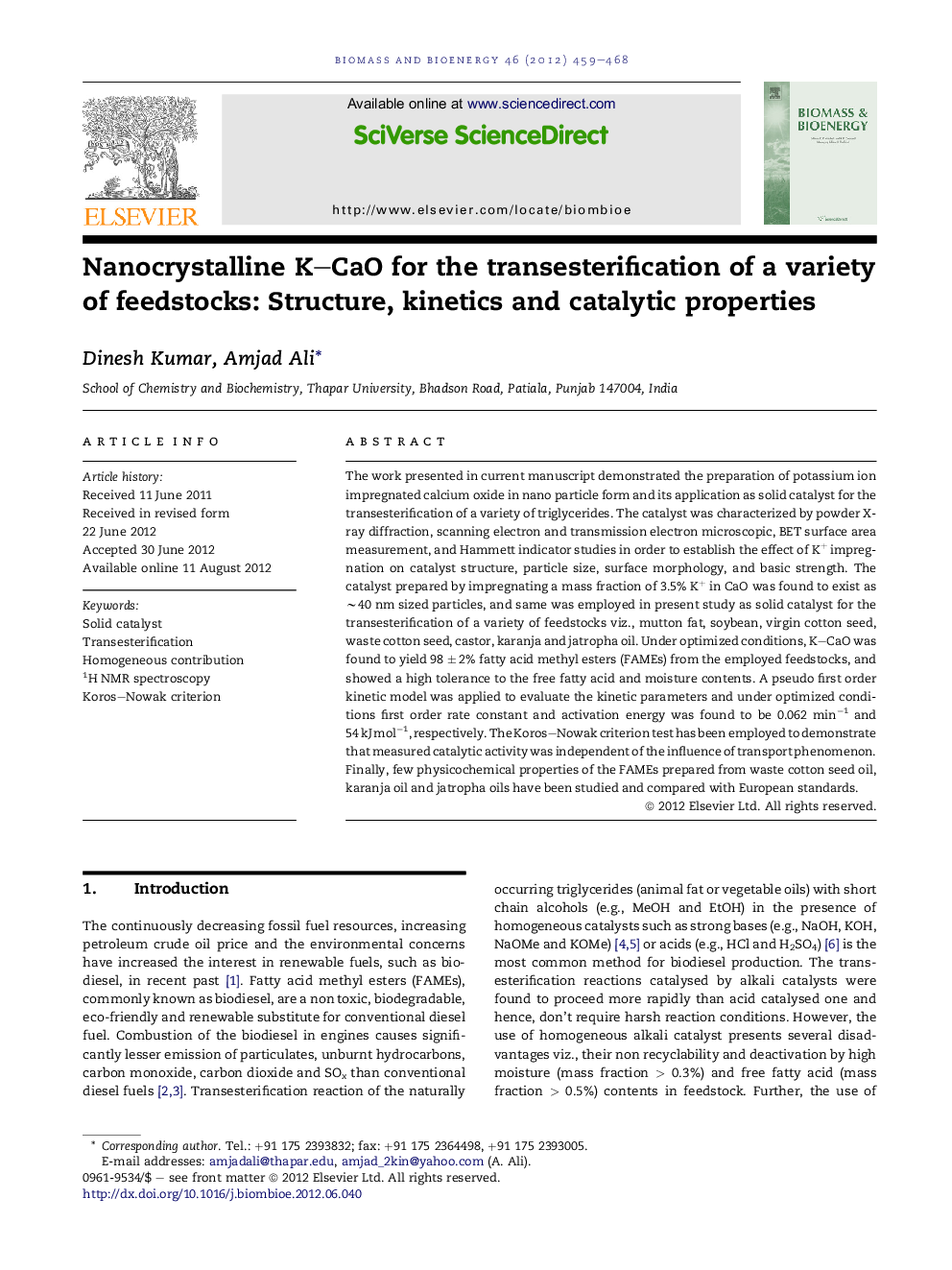| Article ID | Journal | Published Year | Pages | File Type |
|---|---|---|---|---|
| 677180 | Biomass and Bioenergy | 2012 | 10 Pages |
The work presented in current manuscript demonstrated the preparation of potassium ion impregnated calcium oxide in nano particle form and its application as solid catalyst for the transesterification of a variety of triglycerides. The catalyst was characterized by powder X-ray diffraction, scanning electron and transmission electron microscopic, BET surface area measurement, and Hammett indicator studies in order to establish the effect of K+ impregnation on catalyst structure, particle size, surface morphology, and basic strength. The catalyst prepared by impregnating a mass fraction of 3.5% K+ in CaO was found to exist as ∼40 nm sized particles, and same was employed in present study as solid catalyst for the transesterification of a variety of feedstocks viz., mutton fat, soybean, virgin cotton seed, waste cotton seed, castor, karanja and jatropha oil. Under optimized conditions, K–CaO was found to yield 98 ± 2% fatty acid methyl esters (FAMEs) from the employed feedstocks, and showed a high tolerance to the free fatty acid and moisture contents. A pseudo first order kinetic model was applied to evaluate the kinetic parameters and under optimized conditions first order rate constant and activation energy was found to be 0.062 min−1 and 54 kJ mol−1, respectively. The Koros–Nowak criterion test has been employed to demonstrate that measured catalytic activity was independent of the influence of transport phenomenon. Finally, few physicochemical properties of the FAMEs prepared from waste cotton seed oil, karanja oil and jatropha oils have been studied and compared with European standards.
Graphical abstractTEM image of 3.5–K–CaO.Figure optionsDownload full-size imageDownload as PowerPoint slideHighlights► K–CaO as nanosized solid catalyst for the transesterification of variety of feedstock has been prepared and characterized. ► K–CaO was found effective even when 8.4% free fatty acid and 10.3% moisture contents were present in the feedstock. ► K–CaO was reused 3 times and lixiviation studies shows that the catalyst activity is entirely due to the solid catalyst.
